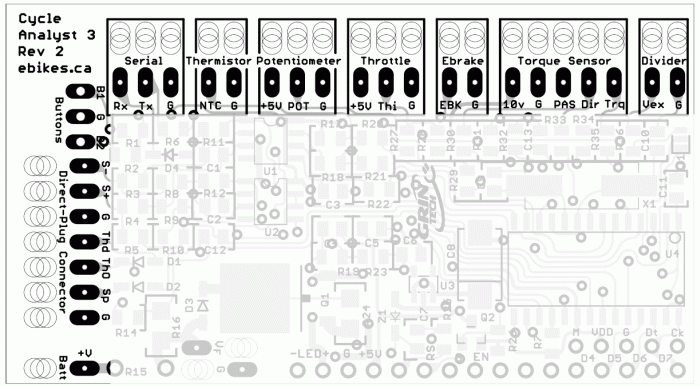hieronymus
10 mW
- Joined
- Mar 20, 2021
- Messages
- 21
[EDIT] Summary: the Grinfineon controller is in sensored mode, but there is no poles signal at the CA, so there seems to be a problem with getting the Halls signal from the controller to the CA.
Just getting my DIY e-scooter set up and running into two issues, perhaps related:
I have:
Notes:
Some settings:
I'm 100% new to all of this so don't be afraid to point out the basics. Thanks for any help
Just getting my DIY e-scooter set up and running into two issues, perhaps related:
- the speedo shows zero when the motor is spinning
proportional regen isn't working--the wheel gradually slows to a halt and Watts remain in the positive zone
I have:
- CA V3
T-Clever thumb throttle, connected to the CA
Grinfineon C4825-L10
this motor: https://www.alibaba.com/product-detail/60v-48v-13-inch-800w-electric_62382170783.html
Notes:
- the LED on the controller is a steady red, indicating sensored mode
when spinning the motor using the throttle, and when manually rotating the rear wheel, there is no movement in the arrow beside the 'P' on the speedo setup screen
Some settings:
- Spd-Circumf 1037 mm
Spd-Poles 23 [note: I don't know how many poles are in this motor and I can't count them since there is no signal when rotating the wheel in the speedo setup screen. Just out of curiosity, I tried setting the number of poles to 8, 12, 16, 20, and 26, but there was no change]
Throttle Output-MinOut 1.0 V
Throttle Output-MaxOut 3.6 V
Ebrake-Signal Lvl-Low
Ebrake-PropRegen-Enabled
ebrake-BrakeOut 0.8 V
I'm 100% new to all of this so don't be afraid to point out the basics. Thanks for any help



